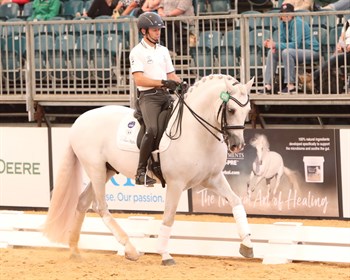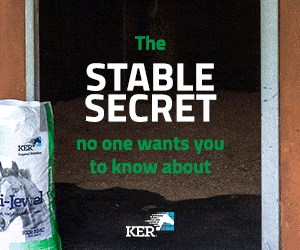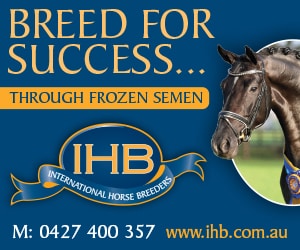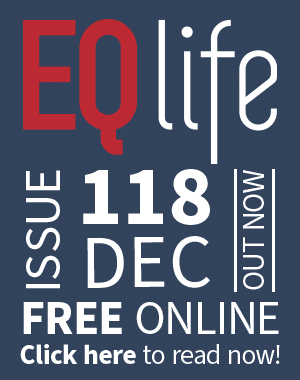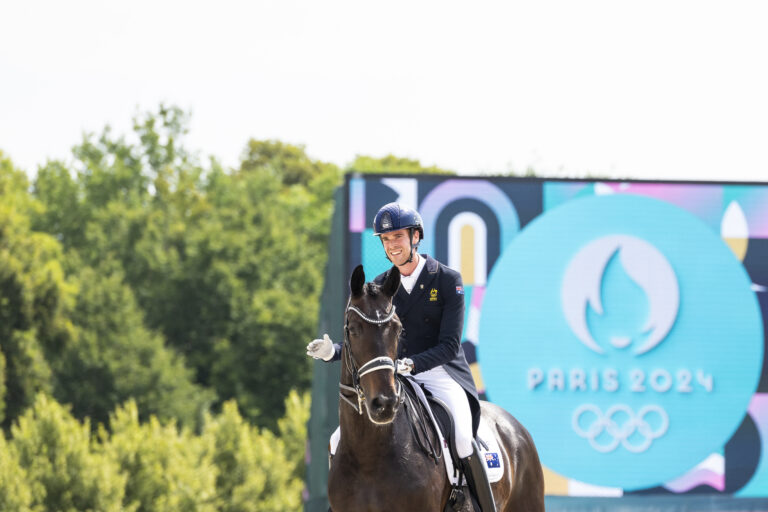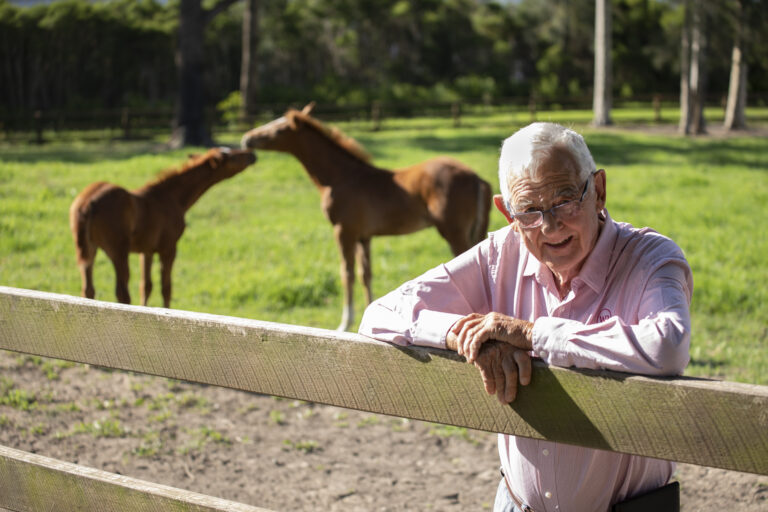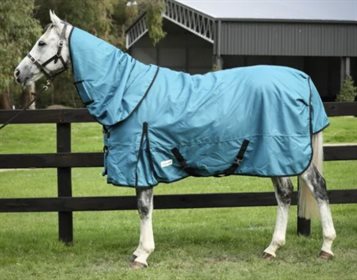Pedro and Istan De Azuel
© Roger Fitzhardinge
By Roger Fitzhardinge
Pedro Torres is a World Champion Working Equitation specialist and trains using classical dressage principles and by establishing a respectful and kind relationship with his horse. His name is synonymous in Europe with harmonious, classical horse training.
His comments and lessons were inspiring. He rode all the horses with expertise and feel.
Clair Arnold and Dolcima
This mare was very hot coming into the arena and tension personified. Pedro just walked around and let her look around first, and then in the walk he worked a lot on the quarters in and out as it is this part of the horse that needs to be moved around to get the back to relax. Also, once the quarters are moved about and then you use the small circle and then you start to let the pressure of the reins go away and the pressure away allows the neck to start to relax and stretch; this is done always on a small circle.
It’s all about the touch and there is no use being strong with the aids, but you have to get the horse’s trust and then as soon as there is a release then there is a release of pressure. Patience and consistency, and quiet and touch with the leg until you get a soft, easy response. The aids are not conflicting but simply and easy.
This was then taken to the trot on small circles and when there was too much power in the reins, the outside/inside flexion was used and then yield. Plenty of flexion exercises and the tension starts to go away and then confidence appears. Always slow steps, as in learning the dance routine. If you give the reins and the horse runs off, then you use the reins to slow down and then give until the relaxation and the horse stays in balance and doesn’t run away. Shoulder in, all like in slow motion. If you don’t learn the steps slowly and easily, then when you dance in proper time it will not be so pleasing. When you go straight and the head gets high, then the small circle and back to the first exercise until you get the relaxation. Take the power out, and no power until you get the horse to wait and not run away. With horses with a lot of movement, you must first go slow with a horse with not so much, then you need to go forward. Energy with the brake does not work. Pedro says he likes energetic. Riding is like a painting and the horse takes up the whole picture and only the signature in the corner is the rider.
In the canter it is all the same as in the walk and then the trot and then the canter. The canter creating starts to appear, and this is part and parcel with the relaxation. Straight away into the pirouettes, and the engagement and balance is all-important. Always light. Less bending creates more control of the hind legs. Because of the tension in the back, you cannot do the work in the right way and so relaxation, time and slow!
This was a fantastic way of showing ways to get through tension and a great explanation.
Heather Currie and Istan De Azuel
Pedro explained that the Spanish bred horses are often very elastic, and with these very loose elastic horses there is not always strength… and so you need to develop this.
He explained very well that to get the horse strong over the back he must put the neck down and use the abdominal muscles strong to get the back up. The neck down is a crucial part of getting the abdominal muscles to switch on and lift the back. In collection, he must keep the neck down. It’s all about experience and trying exercises to improve the balance of the horse. All the lateral work was in the walk and slow.
If you ask for power with the quarters, some short steps are to be rewarded. Rein back helps to put the weight in the hind legs. Experience then finds the best solution for making piaffe, and so Pedro knows ways towards the means. To find the best coordination between the hind legs and the front legs, the lateral work on the circles really encourages this connection.
Pedro again starts with the very, very slow steps. In the leg yield, always the shoulders leading and be aware of the equality of the looseness to both shoulders.
In the half pass, Pedro only uses the outside leg — not both — and he finds this better and so more freedom to the horse and ease. If you want to go straight then, it is the reins that take the horse straight. Simple and easy to understand. Pedro was very insistent that the neck must be round and down for the benefit of the horse’s balance and use of the back.
Again he wanted the neck down in the canter to help the balance and for the rider to be light and feel what is happening, and when the tension from the rider or the horse didn’t allow freedom. Do not push the limits and always to help the balance, Pedro wanted the neck down. When you do maximum collection, it’s important too sit still and let the horse be energetic and from the rider’s legs. If the horse over tries in the changes, then don’t do them… just relax and wait. And always put the neck down when getting the relaxation. The two tempi changes were great and the same with a few one tempis.
Riding is a dance and you must always dance to the same music… and to finish the programme Pedro put together a wonderful moving freestyle. The man is beautiful, as is his love of the horse.
READ THE LATEST NEWS ARTICLES HERE

